Chenyi Liu
FERN: Leveraging Graph Attention Networks for Failure Evaluation and Robust Network Design
May 30, 2023



Abstract:Robust network design, which aims to guarantee network availability under various failure scenarios while optimizing performance/cost objectives, has received significant attention. Existing approaches often rely on model-based mixed-integer optimization that is hard to scale or employ deep learning to solve specific engineering problems yet with limited generalizability. In this paper, we show that failure evaluation provides a common kernel to improve the tractability and scalability of existing solutions. By providing a neural network function approximation of this common kernel using graph attention networks, we develop a unified learning-based framework, FERN, for scalable Failure Evaluation and Robust Network design. FERN represents rich problem inputs as a graph and captures both local and global views by attentively performing feature extraction from the graph. It enables a broad range of robust network design problems, including robust network validation, network upgrade optimization, and fault-tolerant traffic engineering that are discussed in this paper, to be recasted with respect to the common kernel and thus computed efficiently using neural networks and over a small set of critical failure scenarios. Extensive experiments on real-world network topologies show that FERN can efficiently and accurately identify key failure scenarios for both OSPF and optimal routing scheme, and generalizes well to different topologies and input traffic patterns. It can speed up multiple robust network design problems by more than 80x, 200x, 10x, respectively with negligible performance gap.
6DOF Pose Estimation of a 3D Rigid Object based on Edge-enhanced Point Pair Features
Sep 17, 2022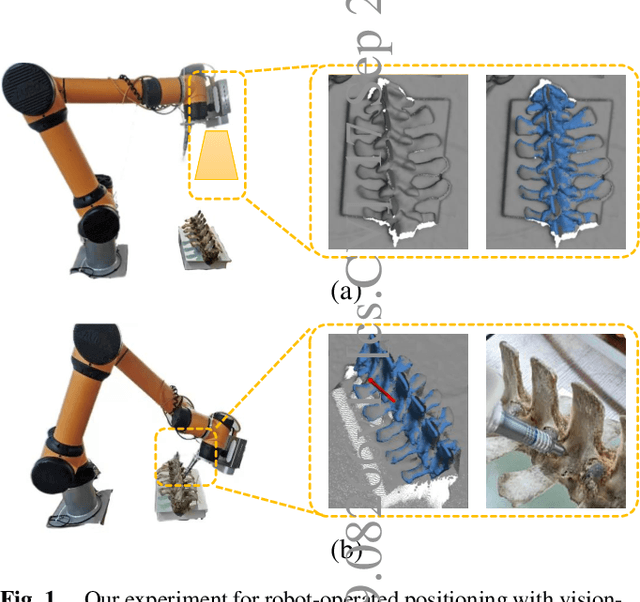

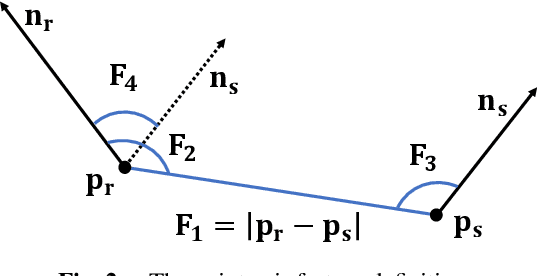

Abstract:The point pair feature (PPF) is widely used for 6D pose estimation. In this paper, we propose an efficient 6D pose estimation method based on the PPF framework. We introduce a well-targeted down-sampling strategy that focuses more on edge area for efficient feature extraction of complex geometry. A pose hypothesis validation approach is proposed to resolve the symmetric ambiguity by calculating edge matching degree. We perform evaluations on two challenging datasets and one real-world collected dataset, demonstrating the superiority of our method on pose estimation of geometrically complex, occluded, symmetrical objects. We further validate our method by applying it to simulated punctures.
ARM3D: Attention-based relation module for indoor 3D object detection
Feb 20, 2022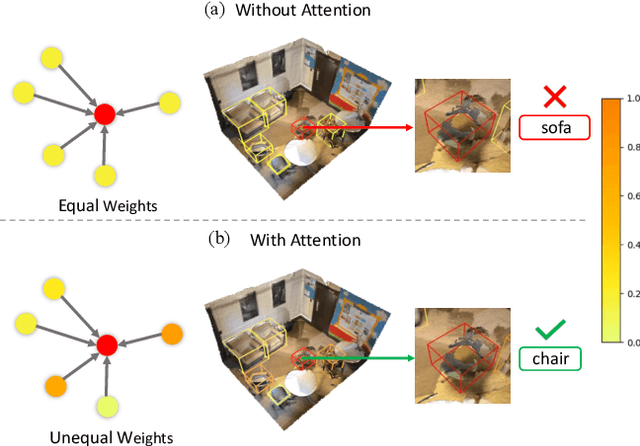


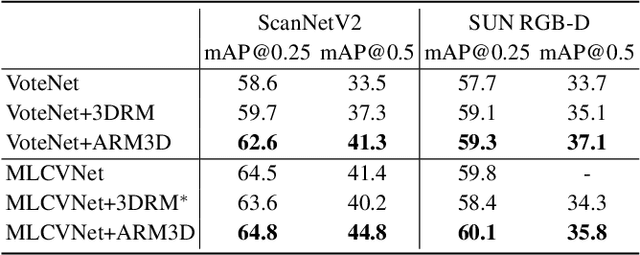
Abstract:Relation context has been proved to be useful for many challenging vision tasks. In the field of 3D object detection, previous methods have been taking the advantage of context encoding, graph embedding, or explicit relation reasoning to extract relation context. However, there exists inevitably redundant relation context due to noisy or low-quality proposals. In fact, invalid relation context usually indicates underlying scene misunderstanding and ambiguity, which may, on the contrary, reduce the performance in complex scenes. Inspired by recent attention mechanism like Transformer, we propose a novel 3D attention-based relation module (ARM3D). It encompasses object-aware relation reasoning to extract pair-wise relation contexts among qualified proposals and an attention module to distribute attention weights towards different relation contexts. In this way, ARM3D can take full advantage of the useful relation context and filter those less relevant or even confusing contexts, which mitigates the ambiguity in detection. We have evaluated the effectiveness of ARM3D by plugging it into several state-of-the-art 3D object detectors and showing more accurate and robust detection results. Extensive experiments show the capability and generalization of ARM3D on 3D object detection. Our source code is available at https://github.com/lanlan96/ARM3D.
Learning to Ask Questions in Open-domain Conversational Systems with Typed Decoders
May 13, 2018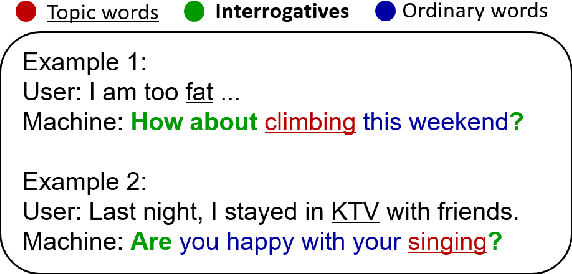
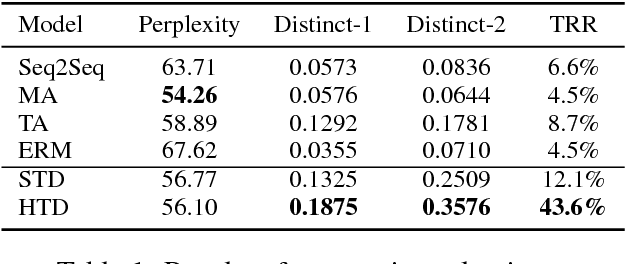

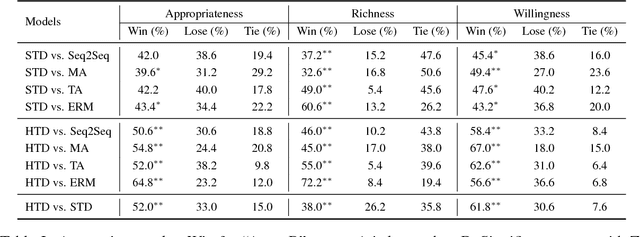
Abstract:Asking good questions in large-scale, open-domain conversational systems is quite significant yet rather untouched. This task, substantially different from traditional question generation, requires to question not only with various patterns but also on diverse and relevant topics. We observe that a good question is a natural composition of {\it interrogatives}, {\it topic words}, and {\it ordinary words}. Interrogatives lexicalize the pattern of questioning, topic words address the key information for topic transition in dialogue, and ordinary words play syntactical and grammatical roles in making a natural sentence. We devise two typed decoders (\textit{soft typed decoder} and \textit{hard typed decoder}) in which a type distribution over the three types is estimated and used to modulate the final generation distribution. Extensive experiments show that the typed decoders outperform state-of-the-art baselines and can generate more meaningful questions.
 Add to Chrome
Add to Chrome Add to Firefox
Add to Firefox Add to Edge
Add to Edge